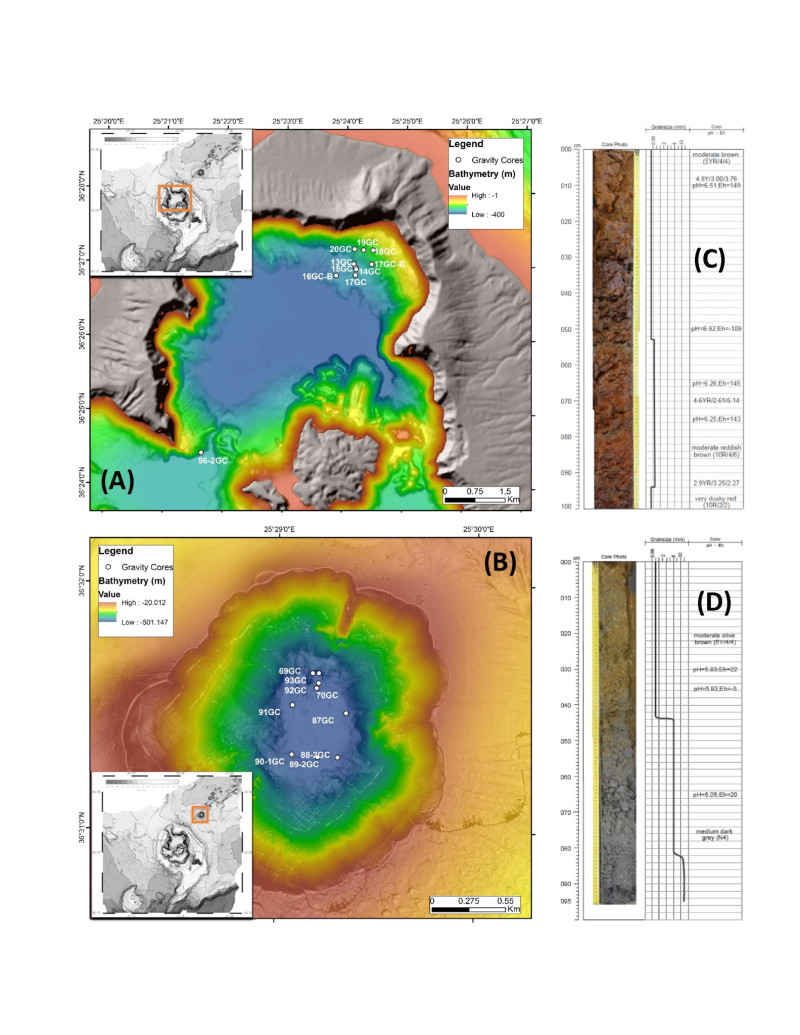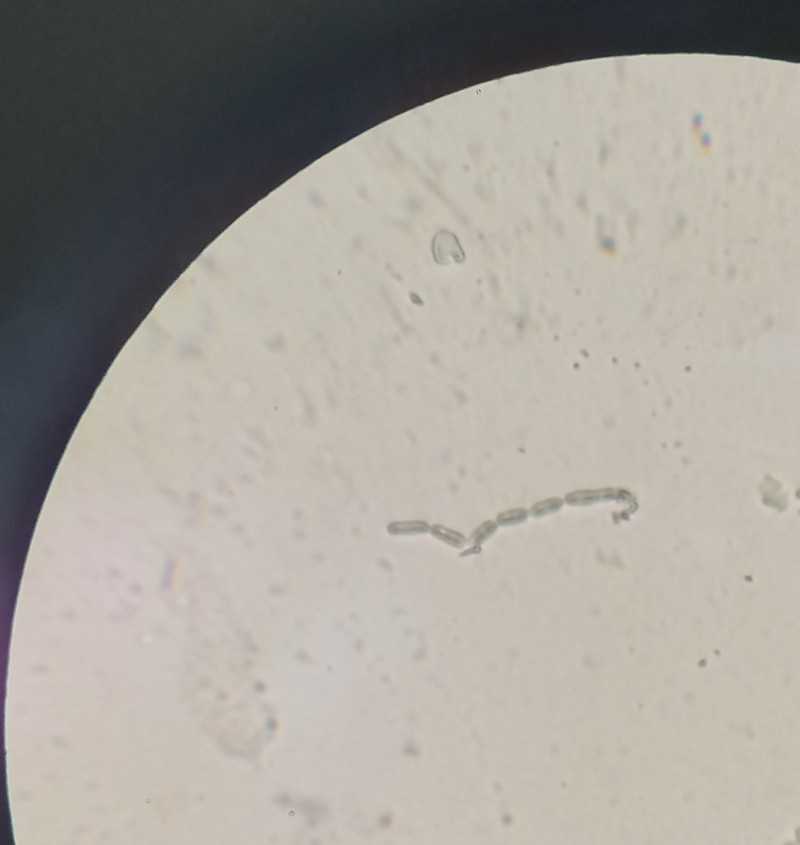Submarine volcanoes, characterized by the presence of hydrothermal fields, are among the most interesting for carrying out studies related to the limits of life on Earth
Is there life in the deepest layers of an active submarine volcano? And if so, how complex can it be? An ideal model for dealing with specific research questions is the volcanic complex of Santorini-Kolumbos. There, microbes were detected at very high temperatures, opening perspectives even in the understanding of possible forms of life on other planets.
Submarine volcanoes, characterized by the presence of hydrothermal fields, are among the most interesting for carrying out studies related to the limits of life on Earth. Since the temperatures in the deepest layers of an underwater volcano increase significantly compared to the surface we wonder if it is possible for microorganisms to exist at such high temperatures.
An answer to these questions was given by a recent research of the Institute of Marine Biology, Biotechnology and Aquaculture of the Hellenic Center for Marine Research (ELKETHE) in collaboration with the Department of Geology and Geoenvironment of the National Kapodistrian University of Athens.
In the research, published in the scientific journal “Frontiers in Microbiology”, evidence is presented for the first time about the microorganisms that live in the deepest layers below the floor of the Santorini-Kolumbos volcanic complex. Kolumpos is an underwater active volcano six and a half kilometers northeast of Santorini.
Scientists from the GEOMAR Helmholtz Center for Ocean Research Kiel in Germany, the University of Ottawa in Canada and the University of Kiel in Germany also participated in the research.
As part of GEOMAR’s POS510 mission carried out in the Santorini caldera and undersea volcano Kolumbo in 2017 with the research vessel Poseidon, microbial material was collected for the first time at a depth of up to three meters below the floor of the volcanic complex using special samplers. The samples were transferred to the Environmental Microbiology laboratory of ELKETHE in Heraklion, Crete, where analyzes of the diversity of microorganisms were carried out with new generation sequencing technologies available at the Institute of Marine Biology, Biotechnology and Aquaculture.
During the analysis, the researchers identified over 10,000 different microbial species, and the diversity of microorganisms remained high even three meters below the surface of the seabed. Remarkably, around 60 different microbial species were identified in a sample at a depth of 1.7 meters, where the temperature approached 99oC. Extremophilic microorganisms may love or tolerate extreme conditions, such as those prevailing at the active submarine volcano Columbus, and develop mechanisms that confer resistance to a wide range of stressors.
“Through our intensive research in the area since 2011, we have uncovered an impressive microbial diversity and recorded an impressive number of genes and microorganisms linked to the geology of the volcanic complex. The specific environments are particularly important from a microbiological point of view, as they open perspectives in the field of biotechnology, but also in the understanding of possible forms of life on other planets. Nevertheless, for the first time we also explored the micro-organisms of the substrate, i.e. those that live below the bottom. The diversity that was revealed is impressive even in the deepest layers, something we did not expect due to the particularly extreme conditions that prevail”, the scientific manager of the project and researcher of the Institute of Marine Biology, Biotechnology and Aquaculture of ELKETHE, Paraskevi Polymenakou, explains to APE-MPE.
The research team went one step further, as they managed to isolate a microorganism from the Columbus volcano that lives and grows at 99oC. This hyperthermophilic microorganism, whose analysis showed that it belongs to the genus Bacillus, was isolated from a sample of mission POS510 and grew rapidly at temperatures from 45 to 99oC. The isolation took place in the context of Eleftheria Zakas’ master’s thesis at ELKETHE. The researchers will proceed with an analysis of the complete genome of the specific bacterium, while also conducting experiments to identify the maximum temperatures at which it can grow and survive.
The high diversity found in the expedition’s samples demonstrates that the subsurface (subsurface) layers of the Santorini-Kolombo volcanic complex are a microbial paradise. An additional question that arises is what happens in the even deeper layers, up to 700 meters below the seabed. There, as part of a recent international oceanographic mission of the International Ocean Discovery Program (IODP), the largest in Greece that conducted underwater research drilling, valuable material was collected and analyzed for the presence of microorganisms during this period. The PhD candidate of the Department of Geology and Geoenvironment of the EKPA, Vasiliki Papadimitriou, has so far isolated high-quality genetic material from a sample 575 meters below the seabed, and in the summer a metagenomic analysis of this material will be carried out, “in order to bring to light the types of microorganisms that lived and what mechanisms they possessed, a few million years ago”, as Mrs. Polymenakou points out.
The associate professor of the Department of Geology and Geoenvironment of the University of Athens, Evi Nomikou, who leads the SANTORY research team that has been studying the volcano intensively since 2006, explains to APE-MPE that “submarine volcanoes of shallow depth, such as Columbus, have a complex geology and the research of their hydrothermal systems is still at an early stage. These shallow submarine, high-energy, hydrothermal systems are associated with significant and potentially dangerous volcanic activity, but they are also a microbial oasis, harboring ultra-resistant, highly diverse microorganisms of intense biotechnological interest.” Ms. Nomikou adds that “for the first time in the Mediterranean, the shallow underwater volcanic observatory SANTORY was created in the Columbus crater with funding from the Hellenic Foundation for Research and Innovation, but also with the contribution and financial support of the municipality of Thira. Columbus is a model of an extraterrestrial ocean and has also been studied by NASA in 2019. It is a natural laboratory with an interdisciplinary character, while its monitoring is necessary to understand its dangerousness.
Source :Skai
I am Terrance Carlson, author at News Bulletin 247. I mostly cover technology news and I have been working in this field for a long time. I have a lot of experience and I am highly knowledgeable in this area. I am a very reliable source of information and I always make sure to provide accurate news to my readers.












